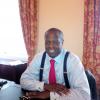Our feet take a pounding every day, carrying our entire weight, so if we’re suddenly struck down by pains in the back of your calves and heel, it can stop you exercising. Here’s how to keep on running.
What is Achilles pain?
The Achilles tendon is the tough, rubbery cord at the back of the ankle that links the muscle to the bone. Regular running, jogging, jumping or other high impact exercise can trigger inflammation in the tendon, or cause wear and tear to the tendon over time.
Symptoms of Achilles pain
The pain may be due to inflammation of the sheath that surrounds the tendon (paratenonitis), or as a result of wear and tear, causing degeneration within the tendon (tendinosis), or it could be a combination of the two.
You may experience:
• Pain and swelling a few inches above the back of the ankle or heel that is warm to the touch.
• The pain may be minor but continuous, or it could be sudden and sharp.
• It may be worse first thing in the morning.
Paratenonitis, is a type of Achilles inflamation that develops in younger people. Symptoms start gradually and spontaneously, with aching and burning. It may improve as you move around, but become worse when you exercise.
Tendinosis, is a similar conditions but is more typical in people in their 40s and above. This is more to do with wear and tear, and if the pain is severe and you have difficulty walking, it may indicate a partial tear of the tendon.
Easing a painful Achilles
• Even if the pain is not severe, it's a good idea to rest until the pain goes.
• Apply ice to the area if you can feel a lump or swelling (never put ice directly on your skin). You can also gently massage the area with your fingers.
• Try using heel wedge supports in your shoes, these are sold at sports and running shops.
When to see a doctor for Achilles pain
‘If the pain in the back of your calves and heel doesn't disappear after three to four weeks, or if you have a sudden, sharp pain, you need to seek help from a doctor straight away,’ says Mr Haroon Mann, a Consultant Trauma and Orthopaedic Surgeon.
• Magnetic resonance imaging (MRI) can define the extent of the damage, the degree to which the tendon is involved, as well as identify any other problems with the feet.
• A cast or brace to completely rest this area may be necessary.
• Extracorporeal shockwave therapy (ESWT) and platelet rich plasma (PRP) injections may be used.
• Nitroglycerin cream applied to the overlying skin. It relaxes blood vessels and allows blood to flow more easily to the area.
• For paratenonitis, a technique called brisement is an option. Local anaesthetic is injected into the space between the tendon and its surrounding sheath to break up scar tissue.
• Surgery for paratenonitis involves cutting out the surrounding thickened and scarred sheath.
• Surgery for tendinosis consists of cutting out scar tissue and calcification deposits within the tendon, and repairing it. In older patients or if more than 50% of the tendon is removed, then one of the other tendons at the back of the ankle is transferred to the heel bone to assist the Achilles Tendon with strength as well as provide better blood supply.








